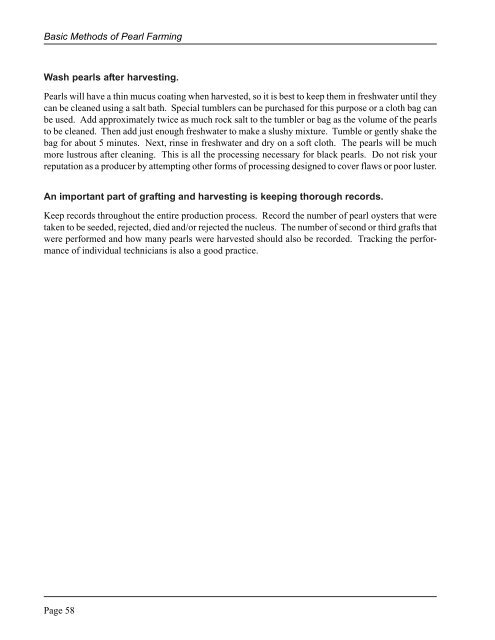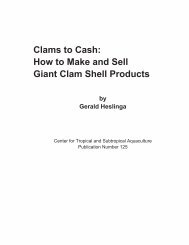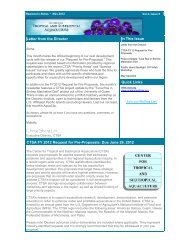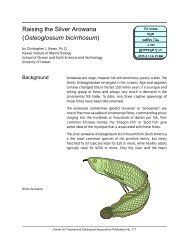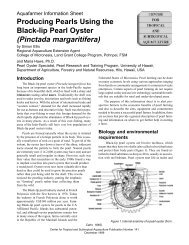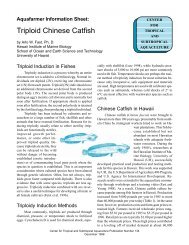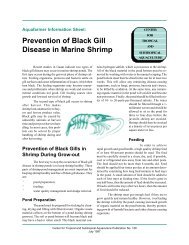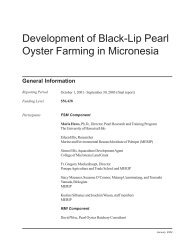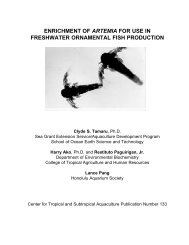The Basic Methods of Pearl Farming: A Layman's Manual - CTSA
The Basic Methods of Pearl Farming: A Layman's Manual - CTSA
The Basic Methods of Pearl Farming: A Layman's Manual - CTSA
You also want an ePaper? Increase the reach of your titles
YUMPU automatically turns print PDFs into web optimized ePapers that Google loves.
<strong>Basic</strong> <strong>Methods</strong> <strong>of</strong> <strong>Pearl</strong> <strong>Farming</strong>Wash pearls after harvesting.<strong>Pearl</strong>s will have a thin mucus coating when harvested, so it is best to keep them in freshwater until theycan be cleaned using a salt bath. Special tumblers can be purchased for this purpose or a cloth bag canbe used. Add approximately twice as much rock salt to the tumbler or bag as the volume <strong>of</strong> the pearlsto be cleaned. <strong>The</strong>n add just enough freshwater to make a slushy mixture. Tumble or gently shake thebag for about 5 minutes. Next, rinse in freshwater and dry on a s<strong>of</strong>t cloth. <strong>The</strong> pearls will be muchmore lustrous after cleaning. This is all the processing necessary for black pearls. Do not risk yourreputation as a producer by attempting other forms <strong>of</strong> processing designed to cover flaws or poor luster.An important part <strong>of</strong> grafting and harvesting is keeping thorough records.Keep records throughout the entire production process. Record the number <strong>of</strong> pearl oysters that weretaken to be seeded, rejected, died and/or rejected the nucleus. <strong>The</strong> number <strong>of</strong> second or third grafts thatwere performed and how many pearls were harvested should also be recorded. Tracking the performance<strong>of</strong> individual technicians is also a good practice.Page 58


